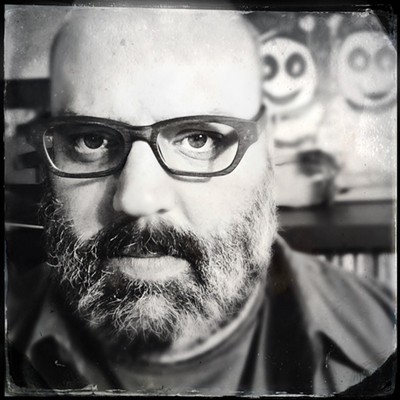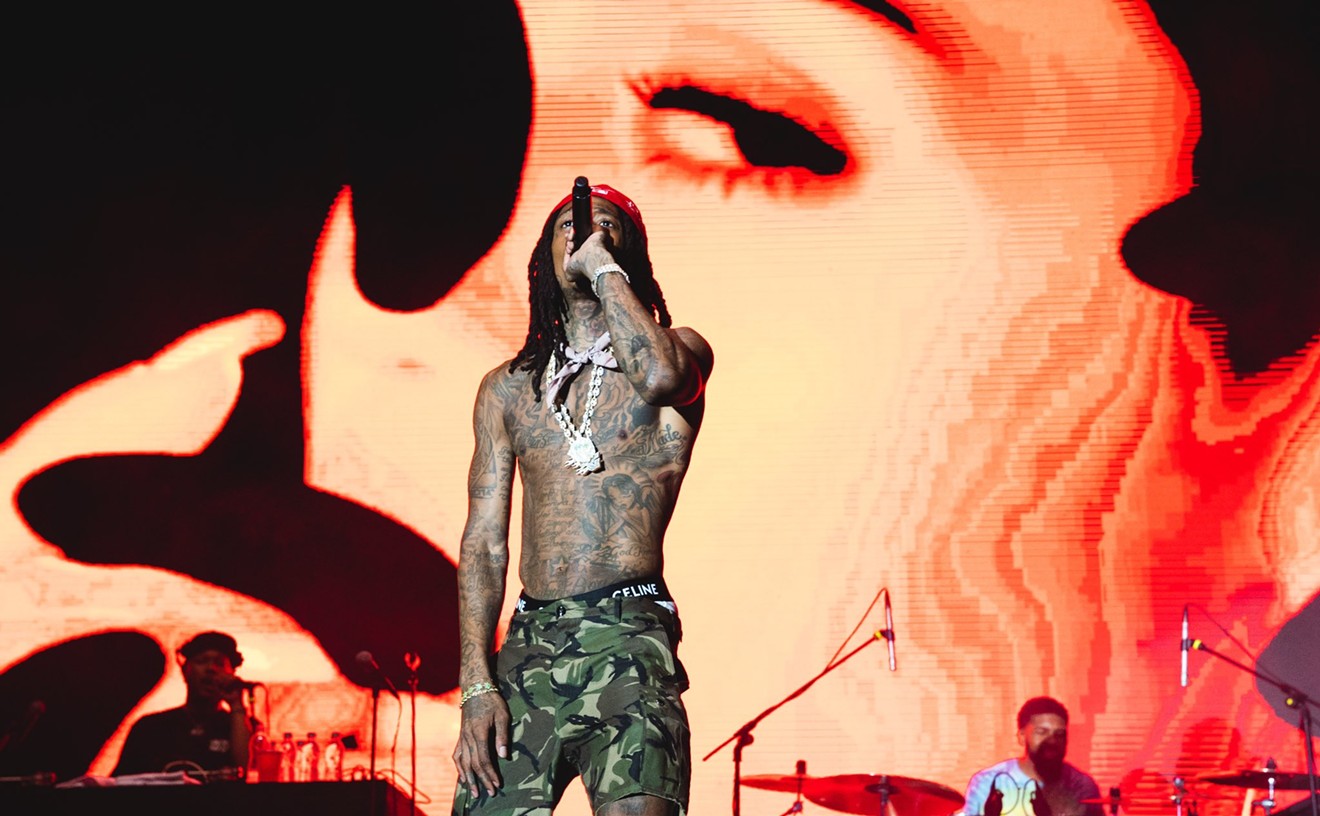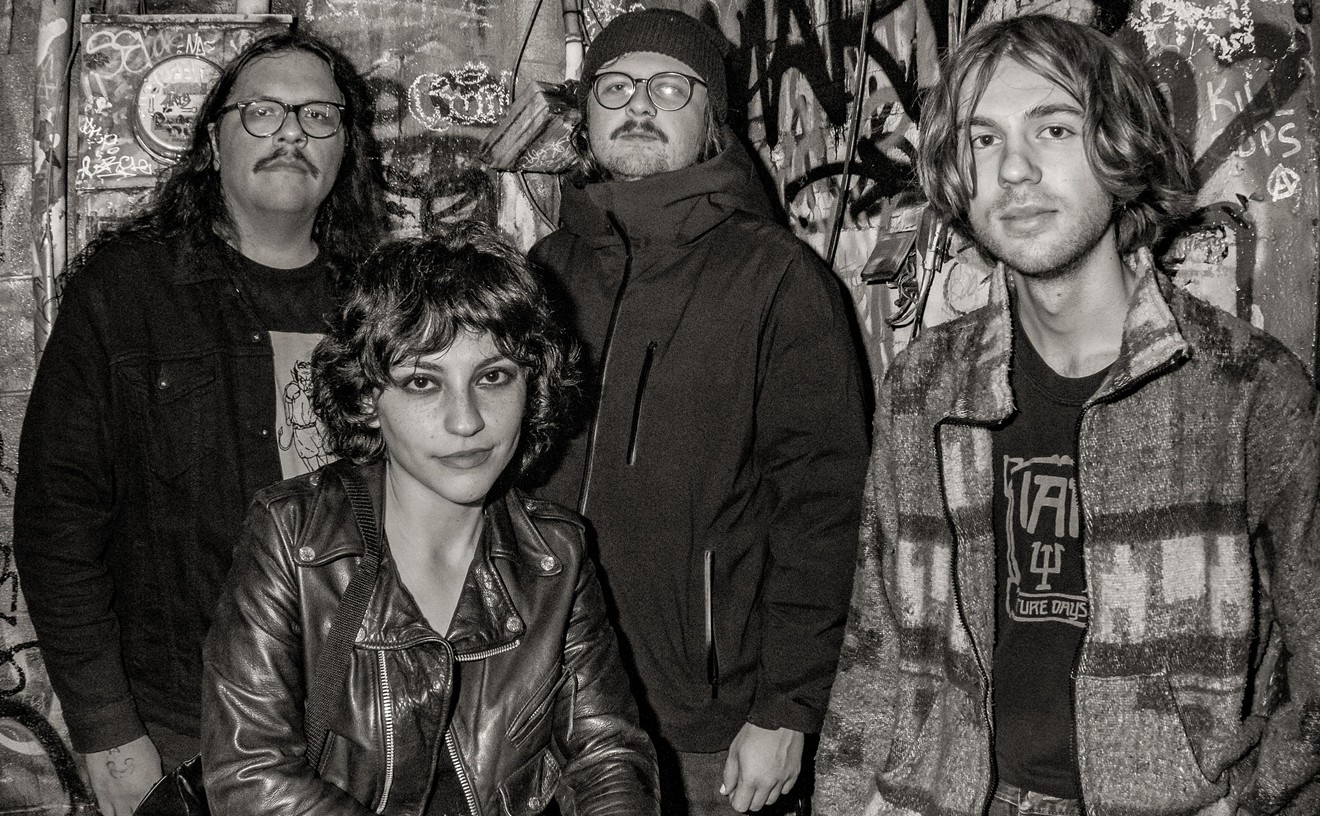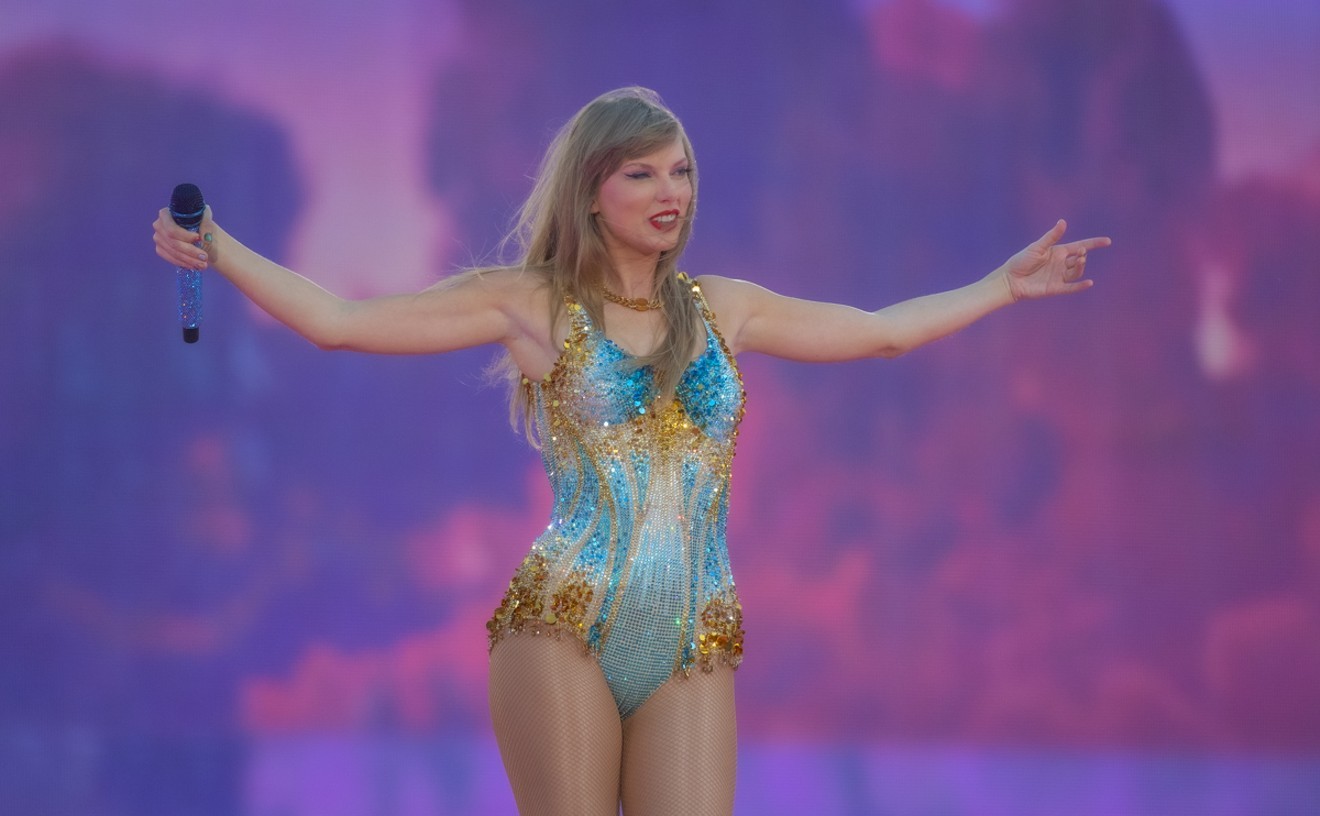Westword: When you play live, is it ever scary relying so much on the effect pedals? Have you ever had any sort of mishaps?
Dustin Wong: Absolutely. The loop pedal actually glitches on me, and the loop will somehow keep skipping around. When that happens I would have to think really quick and make it seem like it was on purpose. Sometimes with the pedals themselves, where the cables go in, the connection isn't right so then the sound starts breaking up. Or I would mess up a loop, I lopped an extra beat in there or I missed a note. That kind of stuff has happened.
I know loop pedals can be especially temperamental at times.
There's something really humbling about that, like giving into the chaos. We're always relying on something, like computers. We're always disappointed when the Internet is slow or when that rainbow wheel comes on a Mac computer. When you think about it, it's man-made, even if it's breaking. In the factory it's made by humans, so of course it's going to be imperfect.
How did originally get into looping on guitar?
In high school there was a kid who had this freeware music software. He asked me to play some guitar and he would loop that melody and I would play on top of that, and he made a little song out of it with just my guitar playing. I thought that would be a pretty good idea. I started making music in high school and in college, but I had never really performed just by myself. The songs were all layer-based music with one melody layered into another, or another melody was being played on top. I didn't know how to do it live but I was asked to play to a show and that forced me to write songs for live performances.
I noticed on the new record reminded me of Steve Reich's "Electric Counterpoint." Was that an inspiration at all?
Absolutely. I love Steve Reich. He was the first composer that made me feel like I was running through a field. Extreme liberation.
I was reading about some of your biggest influences are people that you've played with.
Yes. Absolutely. Like Matt Papich, who I was in a band with, in Ecstatic Sunshine. Ken [Seeno], Jeremy [Hyman] and Molly [Siegal of Ponytail], they're all really influential on me in different ways. Like Jeremy's rhythm and his drums. And Ken's kind of... I never used minor kind of notes in my own music. Well, I guess I did like unintentionally. But he was very intentional about it because he played jazz guitar. By listening to him while we were practicing I would get very influenced by him, and Molly's kind of scream vocals. And Matt just having his own different ideas all the time. It was very inspiring.
I also heard about how when you first started playing guitar, you concentrated on geometric shapes on the fretboard. Do you still do that at all?
Now I understand how the shapes work. But now they're bigger shapes. Before they were smaller shapes. They were little shapes, like three frets over, and a little square here and there. Now I understand what the scales look like, and I can different shapes within them. So yeah, in a way I do still work with shapes. I'm still very visual.
When I play guitar it's more of a visual thing rather than trying to intellectualize what you're playing.
Yeah. In the end I want it to be about imagination of the listener. It's just like a line on a piece of paper. Different lines create a different shape and image and a landscape. That's what the listeners have made for themselves when they're listening. So it's really up to them what they see.
When you are writing stuff, does it come to you visually in the beginning of the process?
I don't have an image in the beginning. The image comes about when I'm done with the song. It's a lot like abstract painting where the painter doesn't know what has happened until they're finished, and that's how I think the songs are written. At the end I don't what... I know what I'm looking for. I know a certain feeling at the end, but it might be a different feeling than what I was anticipating.
Is that around the same time the song titles come into play?
Much later. I try to think of what, to me, the contextural image of the song is. I'll listen to it over and over again and be like, "What is this image that I'm seeing when I listen to the song?"
Follow Backbeat on Twitter: @westword_music











